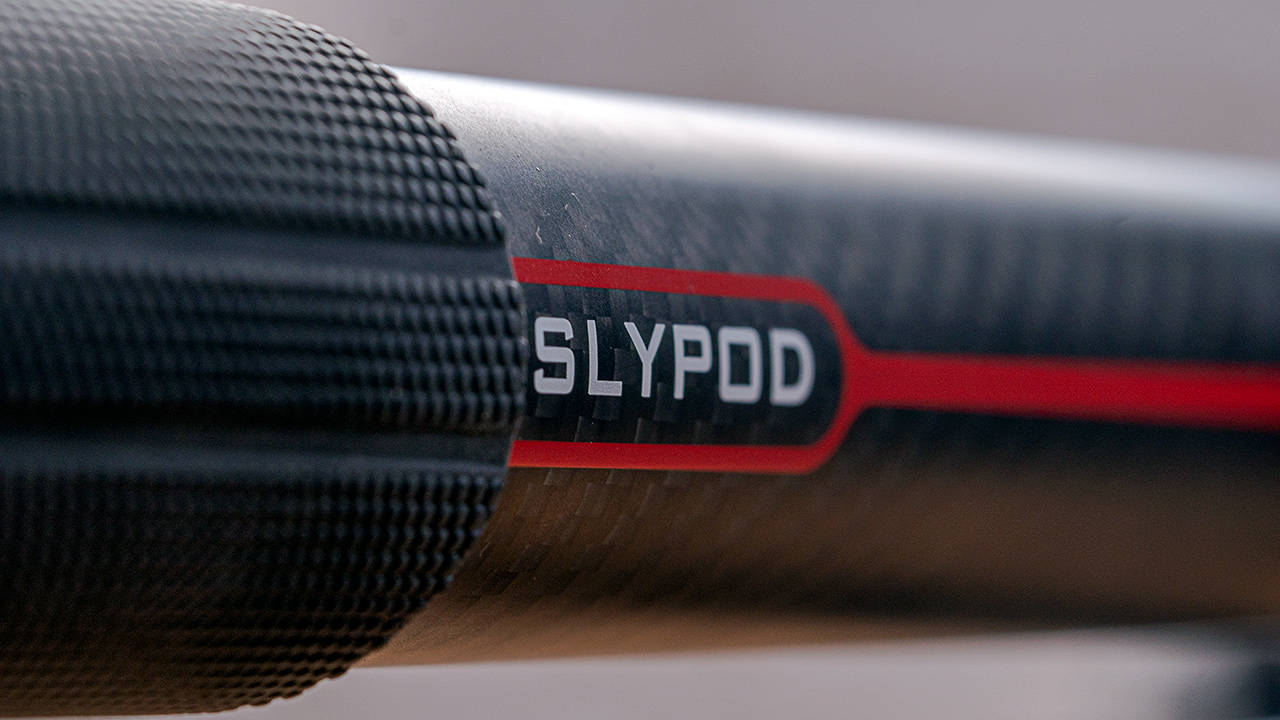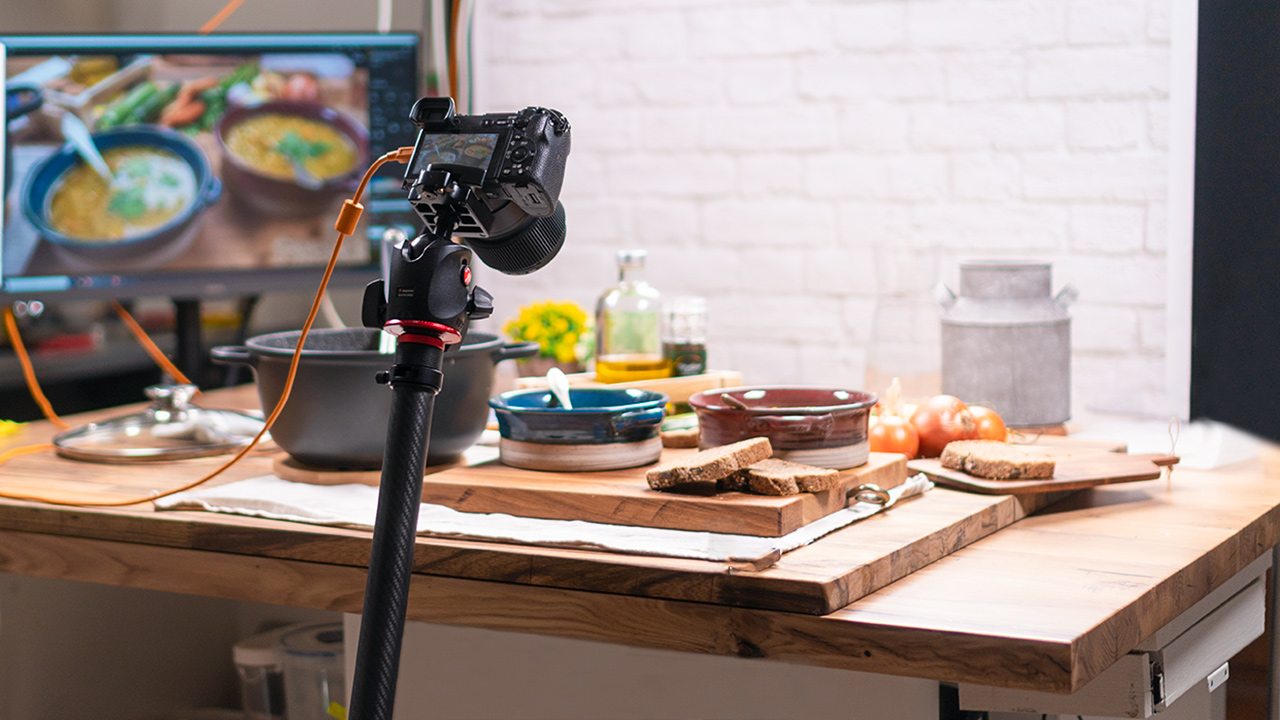Today we are testing a product that we were looking to try for quite some time now. It comes from the Chinese manufacturer Gudsen, mostly known for its Moza gimbal line, but this product isn’t a gimbal, but a unique combination of a monopod and a slider.
The idea behind this product, as we understand it, is mostly to have a much more portable type of slider which users can easily carry almost anywhere and use in ways that a normal slider will have difficulty achieving, as we will try and show in this review. The tube shape of a monopod happens to be a convenient form factor for the Moza Slypod and the unit can serve as one, although we don’t see users buying this product mainly for this application.
The Slypod comes with one of the nieces packaging that we have seen in a long time. Everything seems to be well thought about and the materials and branding are just beautiful. The case itself is actually very useful unlike many recent products we tested, which tend to come with complex or oversized cases.
The Moza Slypod – a unique product
In the case you will find a quick start user guide, a USB-A to USB-C charging cable, mini tripod legs for leveling the Slypod on the floor, a special attachment that allows the user to connect his own head, as well as a special pan and tilt head with an Arca style quick release plate. There is also a nice wooden handle with dual 1/4″ 20 threads on both sides, and finally, there is the Slypod itself which feels really nice in the hand.
Taking a closer look at the Sylpod’s build and design we see that the unit has a really fantastic looking carbon fiber exterior with a rubber part on one side which is convenient to hold. It has a special locking part with 3/8″ 16 and 1/4″ 20 screw threads for attaching the Slypod to tripod or any other fitting attachment. Interestingly this part looks like it has an Arca design but it is actually too narrow – we think that making this part Arca compatible could have been an interesting bonus.
On one side of the Slypod there are the control options. these are fairly basic, you have a metal on/off button and plus and minus rubber buttons. Each can perform several actions as you can see from the official Gudsen table. It took us some time to remember all these functions. Having two our three extra buttons and a tiny screen could have made this much simpler.
The unit measures about 57cm (22″) when closed (without any extra attachments) and when it is fully extended it is 85cm (33″) long. If you add all the accessories including the legs you can get about 113cm (44″) from the floor when fully extended.
If you are using this with a full-size tripod above a table, for example, you need to understand that the part which extends is just 29cm (11″) or if you are using the special pan-tilt head about 38cm (15″), so you can’t really do a very deep slide over a table unless you find a way to position the Slypod itself above the table or connect some sort of extension to it (this is still more convenient than trying to do this with a full-size slider).
Well build and portable
The Slypod itself is very light at 780 grams or 1.7 lbs and the case with the Slypod and all the accessories is also pretty travel-friendly at just under 2.4kg or 5.3 lbs. The official carrying capacity of the Slypod, on the other hand, is extremely impressive – 4kg / 9 lbs (Horizontal) and no less than 9kg / 20 lbs (Vertical), enough for almost any conceivable setup that you might want to use.
The Slypod uses USB-C for charging as well as to connect to a supported camera for timelapse shooting (although we didn’t get the optional cable with our unit so we could not test this). The internal battery should officially last for about 2 hours of run time, but since it is very rare that we actually do continuous slides for more than a few minutes per shoot, this is above and beyond our needs. Also, since you can always use a USB power bank to charge the unit while shooting if you run out of juice, you should be pretty much covered for any situation.
There are two ways you can operate the Slypod – either using the buttons on the unit or via the Moza app. After you long-press the on/off button and get a green light showing you that the unit is on. Using the plus and minus buttons will extract and retract the telescopic part of the unit, and you can also control the speed and acceleration of the unit as well as allow it to go into a continuous mode where the unit moves back and forth.
As we mentioned doing so many things with just 3 buttons isn’t straight forward and it would probably be easier if there were more buttons or even an optional physical remote that has more buttons and can control the unit.
The other method of controlling the Slypod is through the Moza app which can also control some of the company’s other products. Connecting is simple and you have a number of controlling options including simple movement and speed, acceleration as well as more advanced options for creating several different moves one after the other – called “segmented” and of course the aforementioned timelapse function.
The app is usable, but not super friendly and the UI isn’t the best. For example, we could not find any easy way to tell the Slypod to go into repeated back and forth movement from the app (on the Slypod itself you press both plus and minus buttons together – also not convenient and another good reason for a simple physical remote). You can also not give a specific stopping point (i.e. in centimeters) of movement – you can only approximate it by stopping the slider’s movement. We also encountered several disconnects from the app – another reason why a physical remote might be a better option for many users.
On the plus side, the app does have an option for integration with other Gudsen products – especially different motorized gimbals. Do note though that when the Slypod is connected to the app you can’t control it from the buttons on the unit itself.
Regarding noise levels, the Slypod’s movement is not silent although at lower speeds the noise level isn’t too loud and you do have a silent mode on the app which should help a bit.
As for how smooth the slides are, you can see a few horizontal and vertical test shots in our video and judge for yourselves.
Great for food and product videos
Conclusion
The Slypod is a truly innovative product and Gudsen should be recommended for producing such a unique design. Another strong point for Gudsen is the build quality – the Slypod is very well made and comes with useful accessories and a convenient carrying case.
On the downside, we feel that the app is usable but not polished enough (we hope that this will be improved in future releases) and we really hope that Gudsen will take our suggestion for a physical remote to heart, as it can help make controlling the unit easier and quicker, at least for most of the simpler functionalities, as well as eliminate small vibrations when handling the unit directly.
For us, the real advantage of the Slypod over other products is the ability to easily use it as a slider going vertically, horizontally or in an angled movement above food and products, something that can be pretty difficult to do with most conventional sliders without an extensive and complex setup time. It’s lightweight and compact monopod-like design means that you can easily carry it with you to any location and quickly deploy it in various ways.
As for pricing, the Slypod currently sells for $500 and it can be an invaluable tool for anybody looking for a portable yet surprisingly versatile slider. The new remote is also available now for $120 (yes Gudsen had the same idea as we did – it isn’t cheap but it is BT, screen, a wheel and it looks really nice. We hope to test it soon along with another product from Gudsen).
Update: our original Slypod had some movement issues (it was especially obvious when sliding vertically). Gudsen sent us a new one which seems to do much better (apparently the first batch had some issues). The new version we got isn’t perfect but it is much better and with a little stabilizing in post it is perfectly smooth.
You can check out more LensVid exclusive articles and reviews on the following link.

You can support LensVid by shopping with our affiliate partners
Affiliates: Amazon, B&H, Adorama and E-bay.
Why should you trust us?

